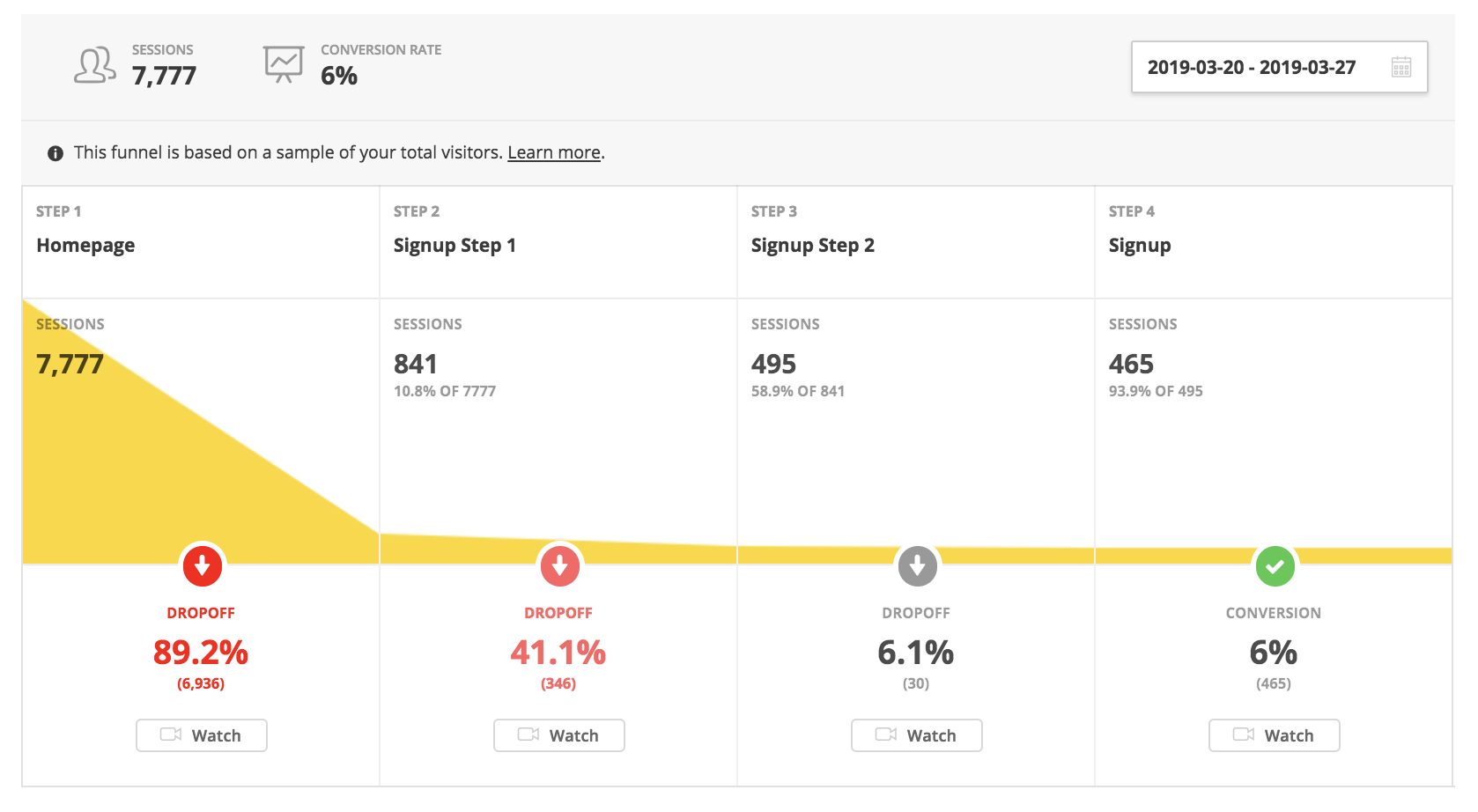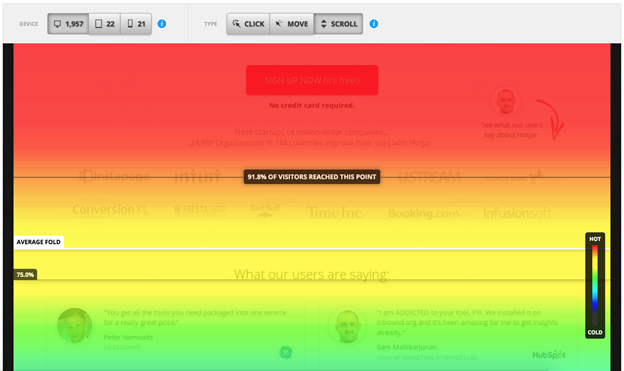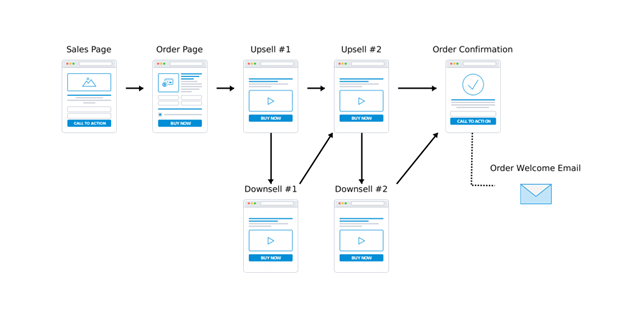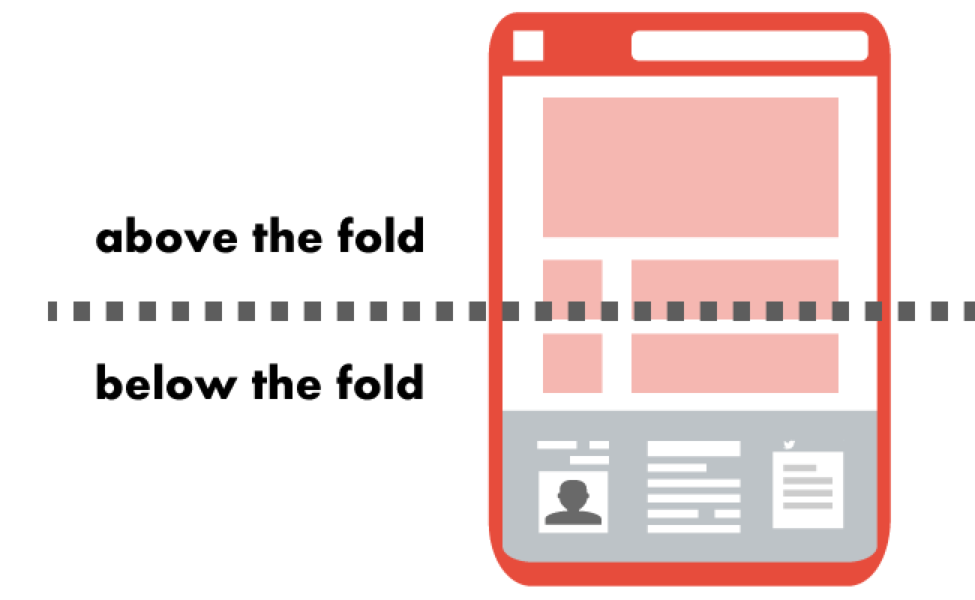What’s a conversion path?
Furthermore, how do conversion paths impact your marketing results? And how can you use conversion paths to get greater results?
That’s the subject of today’s post.
We’ll provide a quick definition with some examples, then describe how marketers can audit (and improve) their existing conversion funnels… as well as how to build effective conversion funnels from scratch.
Let’s dive in!
What’s a Conversion Path?
In online marketing, a conversion path is a description of the step-by-step process by which website visitors turn into leads and/or customers.
Understanding conversion paths is valuable because it allows marketers to A) determine how visitors are engaging with their website and B) optimize that experience to be as high-converting and effective as possible.
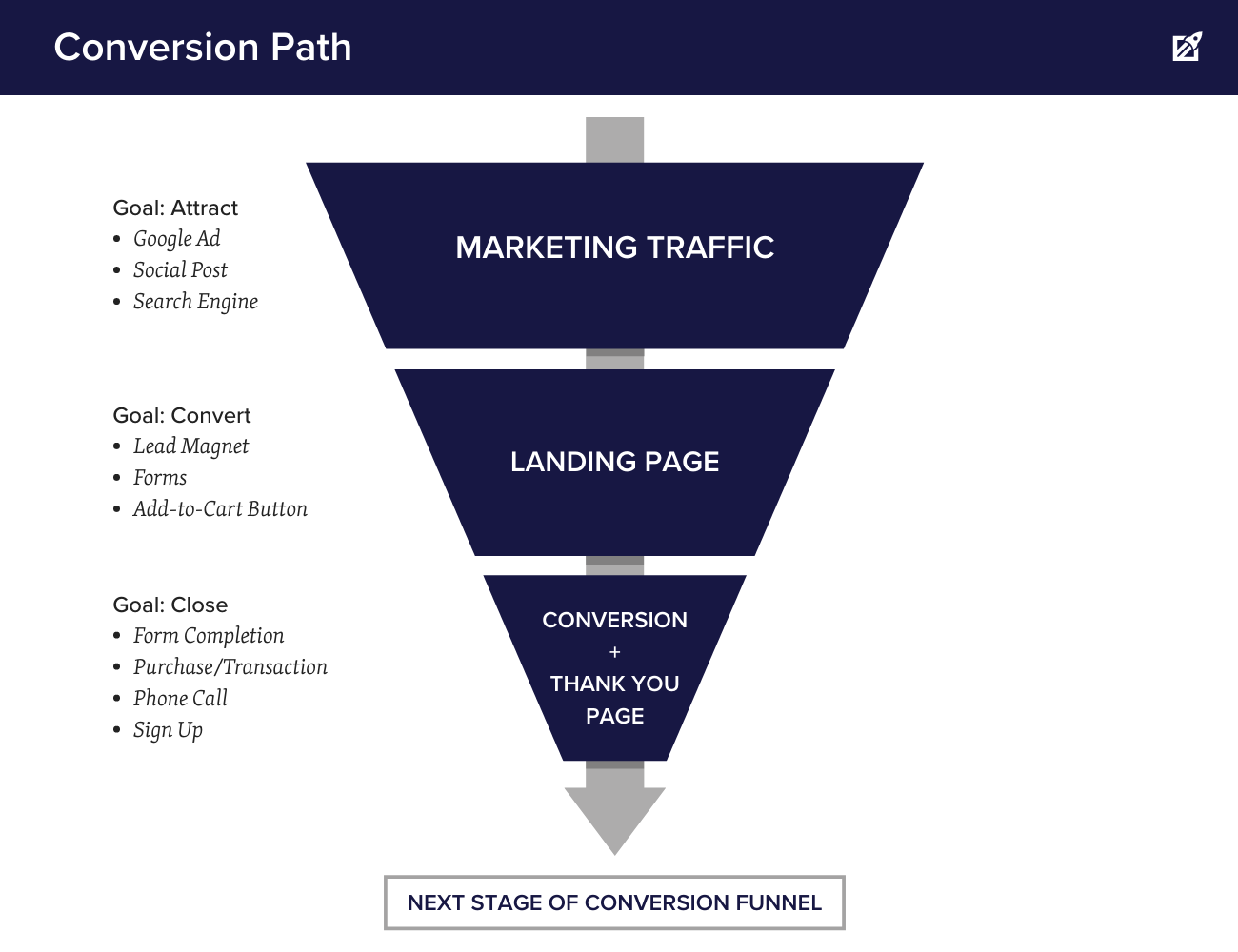
Every conversion path will be different, but all conversion paths have four things in common…
Traffic Source — Every conversion path starts with determining where the website traffic is coming from, because not all traffic sources are equal.
Landing Page — The landing page is the heart of every conversion path. This is where visitors land after they click … and it’s also the place where they decide if they’re going to take the first step toward conversion.
Offer — Conversion paths can’t exist without an offer. An “offer” is the product, service, or resource that you’re promoting in order to collect leads or customers.
End Point — Every conversion path must come to an end (otherwise it’s more of a sales funnel). The end point represents the end of that specific conversion path.
To be clear, some popular online articles from HubSpot and Mixpanel posit that conversion paths are only a description of the method by which website visitors turn into leads — but we see no reason to make any such distinction.
You probably (like any healthy business) will have multiple conversion paths that…
- Turn Website Visitors Into Leads
- Turn Leads Into Customers
- Turn Customers Into Loyal Customers
Each of these actions requires a distinct and specific conversion path.
In fact, the all-knowing Wikipedia opts for a more generalist definition than some of our marketing compatriots… “A conversion path is a description of the steps taken by a user of a website towards a desired end from the standpoint of the website operator or marketer.”
So… Why Are Conversion Paths Important?
After all, why not just send cold traffic to a page promoting your highest ticket offer and bask in the sunlight while you make loads of easy money?
Well… because it won’t work.
The fact is, approximately 96% of people who visit your website are not ready to buy (according to Marketo ) — they’re just exploring.
But conversion paths create an experience that turns those people into action-takers, whether that means they give you their email address to get a free resource or they purchase one of your front-end offers.
And make no mistake.
The conversion path experience is necessary for effective online marketing.
3 Conversion Path Real-World Examples
At this point, it’d be helpful to look at some real-world examples of conversion paths.
1. High-Level Conversion Paths
First, let’s look at a high-level set of conversion paths to get a better understanding of how these work.
Here’s a screenshot of the Google Analytics behavior flow behind Carrot (a SaaS company for real estate professionals).
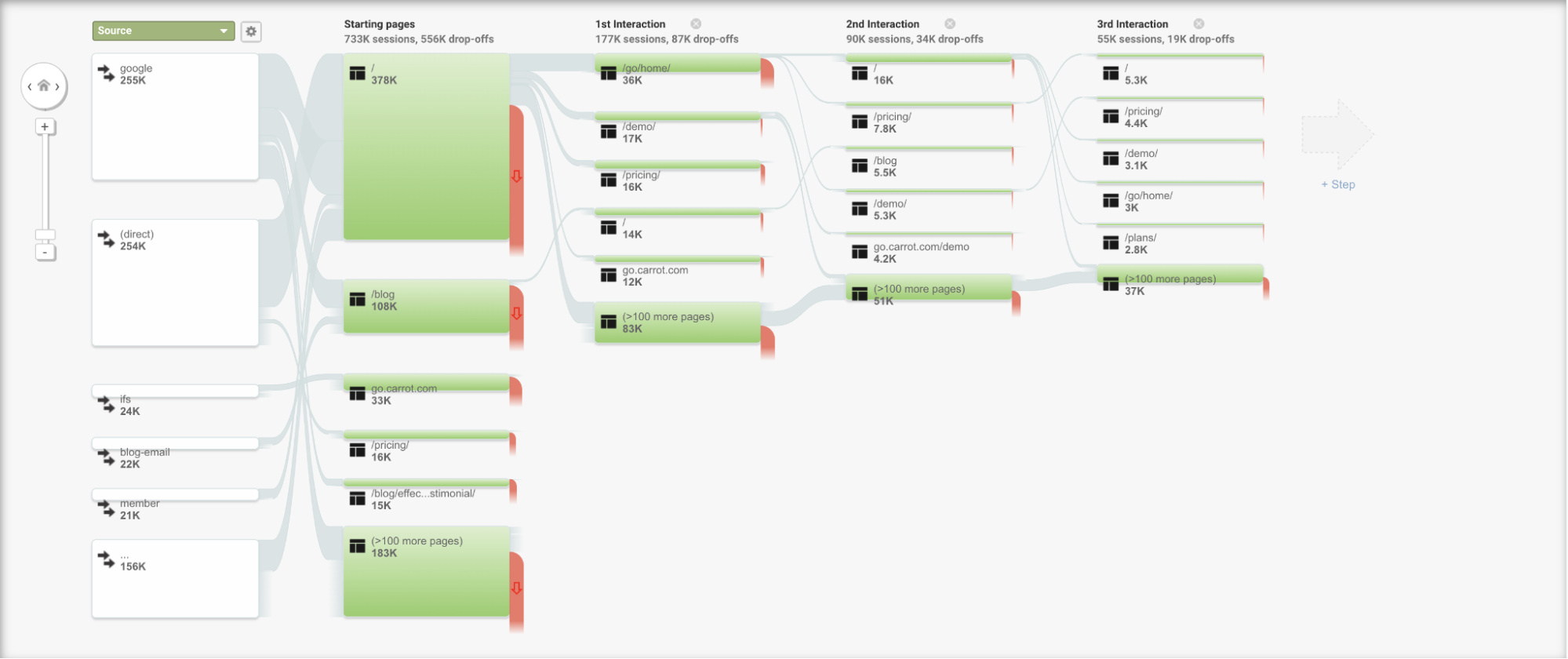
This shows the top traffic sources, starting pages, and most common interactions that people have with Carrot’s website.
There’s a lot going on here.
And it’s important to understand that every business likely has hundreds or even thousands of different conversion paths — those you intend for people to take and those that they take of their own accord.
When you’re trying to learn about your existing conversion paths, these kinds of conversion path charts are helpful because they tell you about how people are interacting with your website.
And you can dive as deep as you want into any of those spider webs.
With a bit of filtering in Google Analytics, for example, we could identify (holistically) our best traffic sources, advertisements, landing pages, or offers — or we could get more granular into a single conversion path and analyze which traffic source is the best for that specific path.
2. A Conversion Path Close-Up
Second, let’s look at a more granular example of a conversion path — the actual advertisements and landing pages that play a part. Here’s an advertisement that Clearbit is running on Facebook, so this would be the “Traffic Source” part of their conversion path…
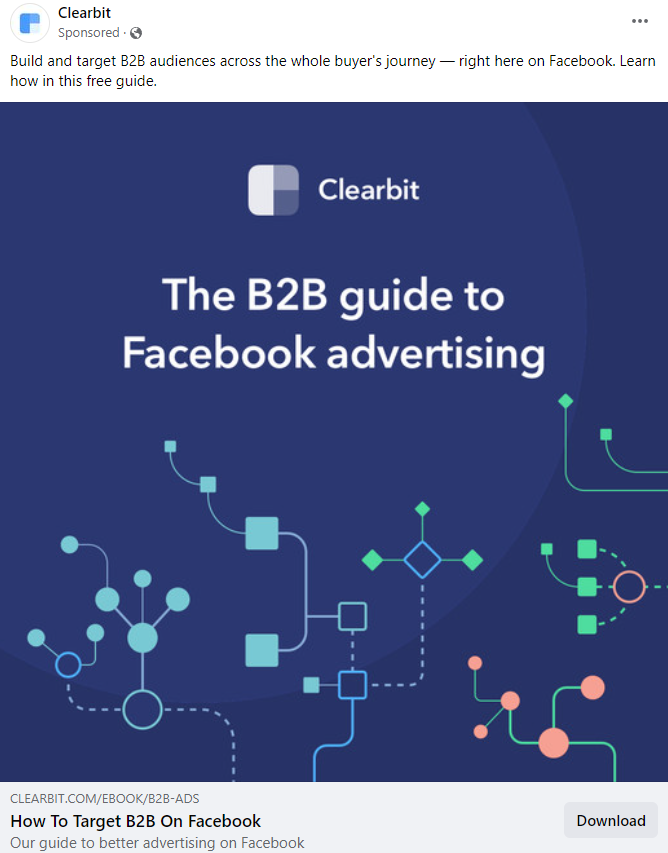
Click on the ad and you’re taken to this landing page…
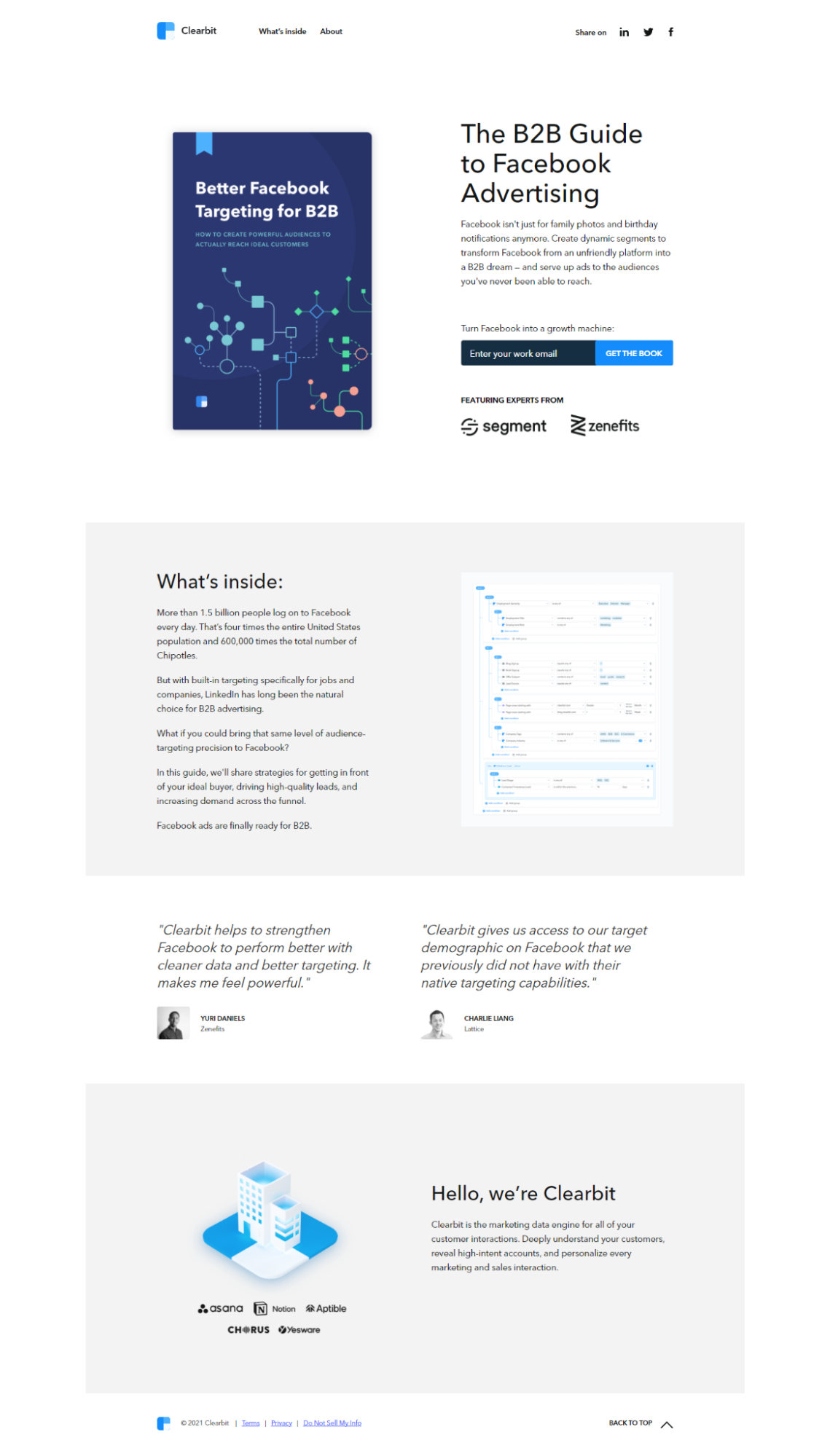
Enter your email and that ends this conversion path (there’s no “thank you” page) and begins a new one — likely an email sequence that works to turn you into a paying customer.
3. Conversion Path Optimization Example
Third, let’s look at an example of how optimizing conversion paths can create a huge boost in revenue and profitability.
You can test and optimize any part of a conversion path, including the traffic source, advertisement, offer, and upsell. But in this example, we (at Linear Design) made some big changes to our client’s landing page and “thank you” page.
Here’s the original conversion path, which had a 1.01% conversion rate after 1,492 visitors…
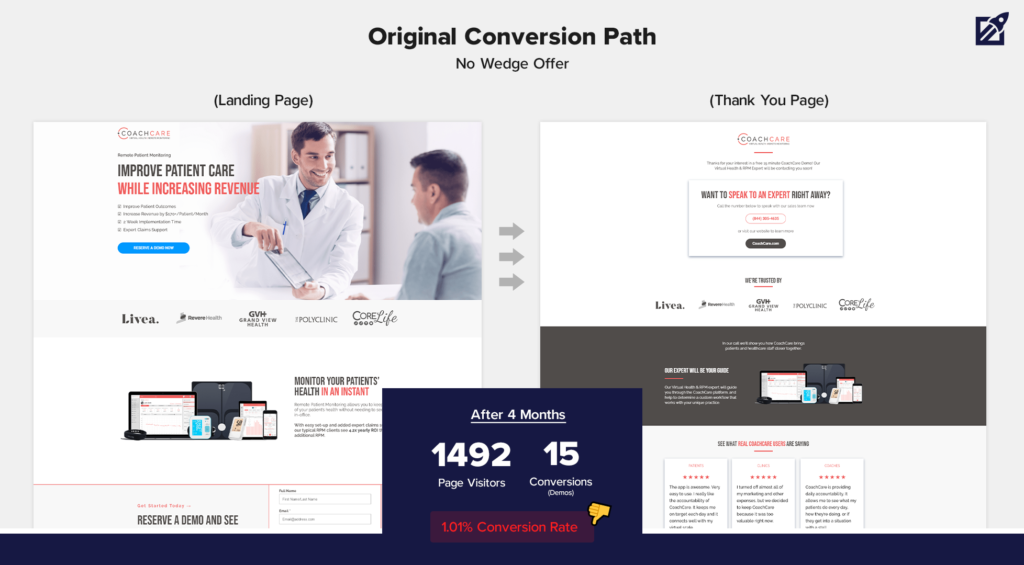
After doing a deep dive into why this conversion path wasn’t performing, we decided to implement what we call the “wedge method” to improve conversion rate.
The idea of the wedge method is that you can increase compliance by having someone agree to a modest request right before asking for a more significant one.
In this case, that meant offering something free and compelling upfront… and then offering a free demo on the “thank you” page.
Doing so raised the conversion rate to a whopping 17.56% — and that number is for demos… not for the upfront free offer.

Amazing, right?
The point here is that playing with, testing, and optimizing your business’ conversion paths is well worth the time and effort. There’s a lot of value right around the corner if you can just identify the right changes to make.
Easier said than done, I know — but that’s what we’re talking about next!
How To Audit & Improve Existing Conversion Paths
Have several conversion paths that you want to improve?
Here are the steps to analyzing and improving your existing conversion paths.
1. Identify Drop-Off Points
The first step is to identify drop-off points. These are the spots in your conversion path that have the lowest click-through rates and the highest bounce rates.
In other words, these spots require the most attention.
As long as you have conversion and click-through rate tracking set-up for each step of your conversion path, determining the biggest drop-off points should be as simple as looking at the metrics.
Below, you can see a visual example of how drop-off points work in a conversion path.
Here are some drop-off points you might find need your attention…
- Traffic Source — If your cost per click is very high, for instance, you might want to start here.
- Landing Page — If the conversion rate on your landing page is under 10%, this is probably an area that needs some focus.
- Upsells/Downsells — If the upsells or downsells in your conversion path are converting at less than 20%, then it’s worth giving them another look.
2. Diagnose Problems
Now that you know which steps of your conversion path are struggling the most, you can
Once you know where the drop-off points are, you need to diagnose why those parts of your conversion path are struggling.
You’ll need to lean on your own (or someone else’s) marketing expertise for this part of the audit — perhaps it’s a problem with your sales copy or your landing page structure or your ad targeting.
Additionally, we highly recommend setting up scroll maps to determine the depth people scroll on your landing page as well as click maps to determine where they’re clicking (you can use a tool like Hotjar for this).
3. Test, Test, & Test Again
Testing. That’s the only way to know for sure if the changes you make are actually improving your conversion path.
Testing is also a great way to identify the actual problem with your conversion path.
Make changes, run your tests, and analyze the results. Rinse and repeat until you’ve hit your desired conversion rate.
Here are a few ideas for things to test if you’re not sure where to start…
Design — Try out different design concepts to see if different visuals increase conversion rates.
Copywriting — Test different headlines, body copy, and call-to-action buttons to see what works best.
Ad Targeting — Change your ad targeting or traffic source to try and get in front of more of the right people.
Ad Creative — Try different ad creatives to see which ones generate more click-throughs.
The CTA — Try out different CTA buttons and see if changing the text or position increases conversion rates.
The Offer — Try to create a more compelling offer and see if it gets more sign-ups from your target market.
Conversion Path Flow — Add or take away parts from your conversion path to try and make it as effective and streamlined as possible.
Check out our split testing guide over here to learn more.
Tracking Conversion Paths in Google Analytics
Google Analytics is one of the most popular tools for finding and analyzing existing conversion paths.
Plus it’s free!
There are a few different useful ways to do this.
First, let’s start in the “Audience” tab, and go the very bottom under “Users Flow”…
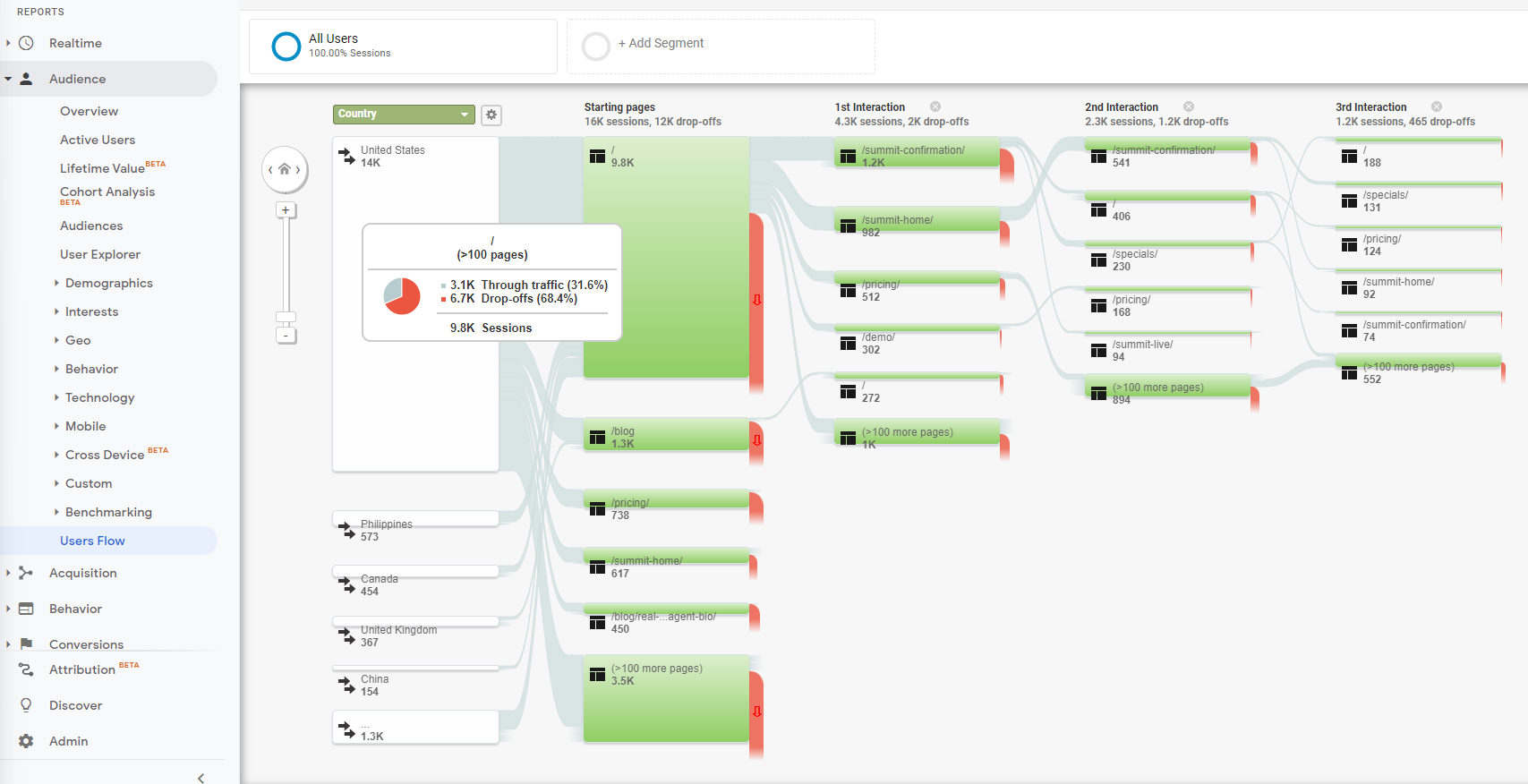
This will show you a high-level and super complex graph of the journey your website visitors take from page to page.
You can click on any point to highlight only traffic continuing from that page.
You can also sort the starting point for this flow by any dimension you choose, including, for instance, traffic source, landing page, or social network.
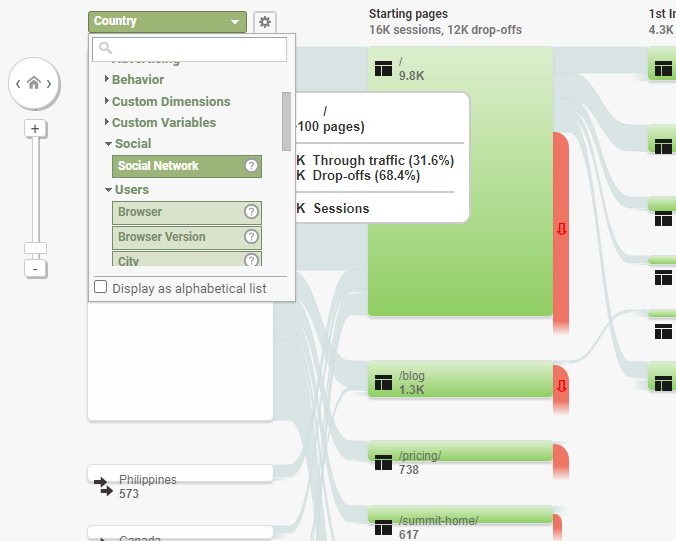
This is great for doing a deep dive on how people interact with your website.
The second useful spot where we can pull some information is in “Goals” under the “Conversions” tab. Click on “Goal Flow”.
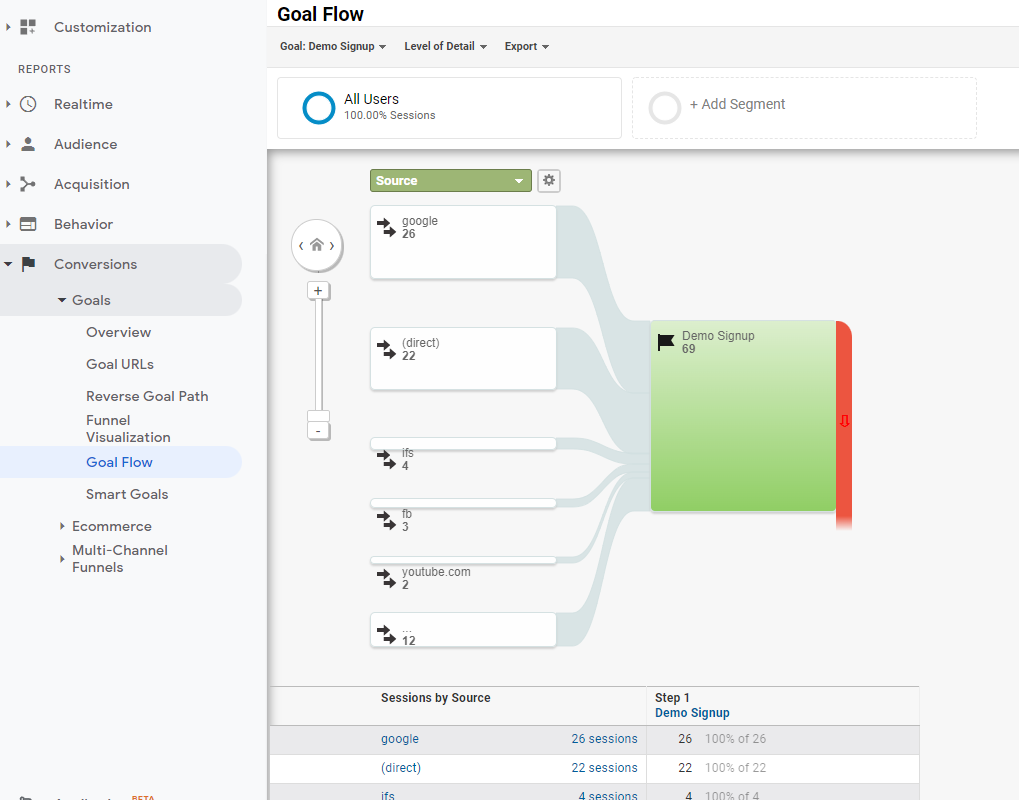
You can then select any dimension you like — traffic source, landing page, social network, etc. — to determine which of those elements are driving the most goal events on your website.
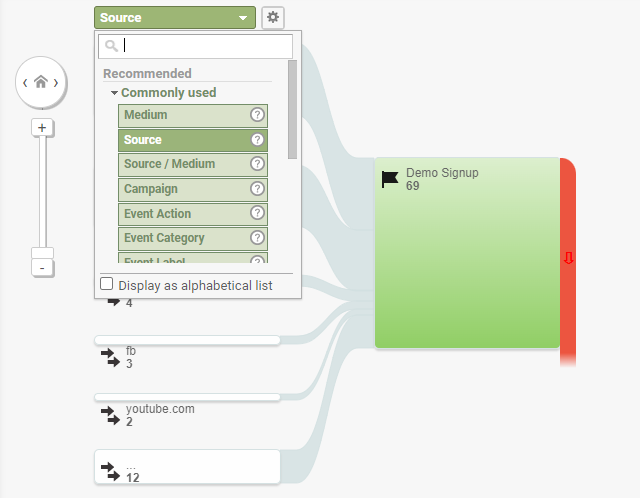
Finally, we can click on “Conversions”, then “Multi-Channel Funnels”, and then “Top Conversion Paths” to get a better idea for which conversion paths are the most effective.
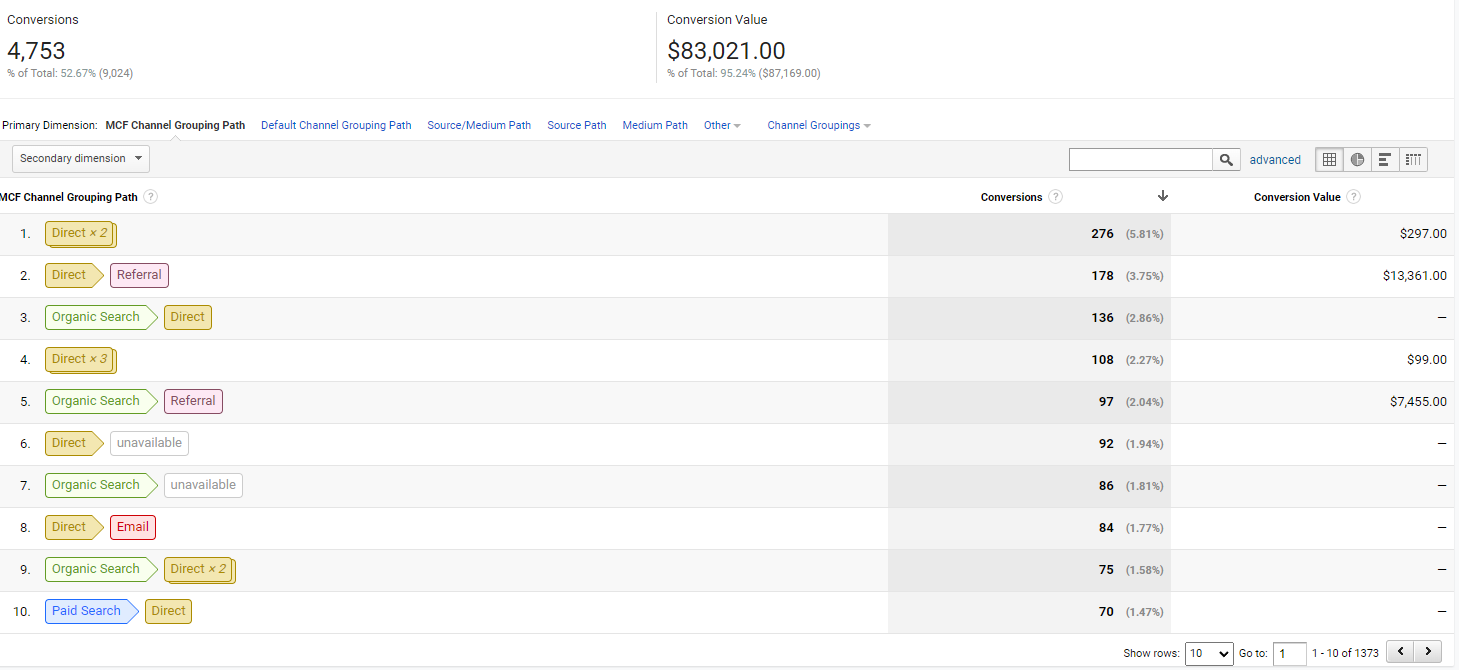
That’s it!
Google Analytics might not be the easiest place in the world to figure out which conversion paths are the most effective and which need troubleshooting, but there sure is a lot of valuable information if you want to go digging.
For more clear conversion path visualization, we recommend using a tool like Mixpanel — it’s Google Analytics with a better user experience.
5 Steps To Create Effective Conversion Paths From Scratch
To finish this post, we’re going to give you a five-step method for creating awesome and effective conversion paths from scratch.
We’ll include practical tips, advice, and examples.
1. Know Your Audience & Their Context
The most important part of creating a high-converting conversion path is to completely understand the people who will walk that path.
Who are they? What do they want? What are they afraid of? What do they desire above all else?
Create a customer avatar for your business if you haven’t already — this will help you solidify in your mind the person whom you serve.
Also think about the context in which they’ll be starting this journey.
Are these people problem-aware or solution-aware?
What platform are they on and why are they on that platform? What would motivate them to leave that platform and visit your website instead?
What device are they using? Is your conversion path optimized for that device?
These are all questions you need to answer when you’re crafting the conversion path.
Put yourself in the shoes of your dream customer — that will help you build a far more compelling and persuasive experience.
2. Map Out The Conversion Path
The conversion path is an experience.
And it’s a helpful exercise to grab a piece of paper and map out the experience you intend to create for your target market.
Maybe it starts with an advertisement. What is the angle of the advertisement and why are they going to click?
Next is the landing page. What is the style, flow, and messaging of the landing page? What does it offer? Why will it compel them to convert?
For any other steps, ask the same types of questions.
Create your conversion map to help you visualize the experience.
3. Segment by Traffic Source
Imagine that you’re running ads from multiple places to a single landing page.
You might not worry too much about where all of that traffic is coming from when you’re trying to optimize the conversion path… but we highly recommend adding this to your list of considerations.
Not all traffic is equal, after all.
You might be driving 10,000 visits per month from Facebook and only 7,000 visits per month from LinkedIn with the same ad spend — and even though the LinkedIn visitors are more expensive, it’s possible that they’re also more valuable .
This is why it’s important to look at conversion metrics based on traffic sources.
Keep that in mind and segment your traffic from the get-go when you’re creating your conversion path.
4. Study Conversion Rate Optimization (CRO)
There’s no denying it — conversion rate optimization and conversion paths are irrevocably bound by the hip.
That’s because improving the effectiveness of a conversion path is often simply a matter of implementing good CRO practices.
So!
Here are some fundamental best practices to consider when building your conversion path.
User Experience
The visitor’s experience should be clean, clear, and simple. Remove anything that gets in the way of that.
Fast Load Times
Fast load times are absolutely vital in today’s world. Most people will abandon after waiting for just three seconds.
Urgency
It’s a fact of psychology that many people are procrastinators. It’s also a well-known fact that urgency, scarcity, and FOMO (Fear Of Missing Out) are great methods for persuading people to take action now rather than later . Add a dash of this to your landing page.

Social Proof
No one wants to be the test guinea pig for your product or service. Add social proof to your landing page via testimonials, case studies, or credibility badges to show people that they’re not the first and they won’t be the last.
Above The Fold
For a landing page, “above the fold” refers to everything a person sees before they start to scroll. This is the most important part of your page. Your headline, subheadline, CTA, and a brief description of what you’re offering should be immediately visible (on mobile and desktop).
Wedge Method
The wedge method is one of our favorite ways to improve the effectiveness of conversion paths. It’s a foot-in-the-door strategy that starts with a low-level front-end offer and only promotes a higher level offer after people have opted in. If you’re struggling to get people signed up directly for your free trial or demo… give it a try. Offer them a compelling resource that you know they’ll want and then offer them a free trial or demo.
5. Keep Your Eye On The Prize Metrics
We can give you tips and advice until we’re blue in the face.
But until that stuff gets tested … it’s all just words and ideas.
When you’re creating your conversion path, test early and test often. Don’t just create one conversion path. Create at least two and test to see which one performs better. Once you’ve determined a winner, create a new test to keep the ball rolling.
You’ll continually improve if you keep testing.
As for which metrics to keep a close eye on, pay attention to…
- Ad Cost Per Click
- Bounce Rate
- Time On Page
- Scroll Depth
- Conversion Rate
- Click-Through Rate
And that’s it!
You now have everything you need to create, optimize, and iterate your conversion paths. Here are some final thoughts.
Final Thoughts on Conversion Paths
Every business has conversion paths.
It’s simply a matter of whether the marketers for that business track the mission-critical analytics behind their conversion paths, and if they consistently work to optimize that experience for their customers and leads.
Businesses depend on it.
Just a few changes to a conversion path can make a massive difference in revenue and profitability.
You can use the above advice to build conversion paths that spiral your visitors toward becoming leads and your leads toward becoming customers.
Ariana Killpack
Director of Content
Ariana prides herself on always learning everything there is to know about pay-per-click advertising and conversion rate optimization, which is why she can create such excellent content. When she’s not writing fantastic content, you can find her hiking, swimming, or baking bread.
Leave us a comment.
Subscribe to our blog
Subscribe to our blog
Get weekly PPC & CRO advice sent straight to your inbox.
